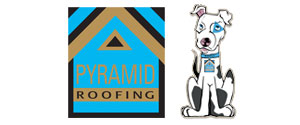- Do you subscribe to Dharma Dog Training’s Newsletter? You should.
- A Unique Campaign from The Humane Society of the United States
- Rabid bats in Omaha- Stay safe, prepared with these tips
- Springtime Activities in Omaha
- Mill Dog Monthly from Bailing Out Benji
- World Spay Day, Legislative Alert in Nebraska
- Attend the Nebraska Rescue Council’s monthly meeting this Saturday
- Five Hard-to-Ignore Reasons to Adopt!
- Paws in Pink to Benefit Breast Cancer Foundation
- VCA, Inc. Acquires MidWest Vet Specialists from Kansas State University
7 ways to train your ESA dog

Are you considering getting an ESA dog? Dogs are excellent companions. They provide us with comfort, love, and sometimes even security. While these animals provide companionship and therapeutic relief for their owners, they must also be adequately trained. To make the most out of our relationship with our pup, we must be trainers too. It can be daunting, but with the right resources, it can be done. This blog post will outline ten different ways to train your ESA dog. There are many ways that we can train our dogs effectively without resorting to harsh punishment or overwhelming commands. We have you covered from basic obedience commands to dealing with specific behavioral issues.
- Start with basic commands:
The first step in training your ESA dog after you receive the emotional support letter kit and settling your ESA in the house is to teach them basic commands. It will lay the foundation for more advanced training later on. Every dog should know basic commands: sit, stay, come, down, and off. These commands should be taught calmly and patiently. It is essential only to give one command at a time and to move on to the following command once your dog has mastered the previous one. Not only will this make your life easier, but it will also help keep your dog safe. Basic commands are a great foundation for more complicated commands and behaviors.
- Use positive reinforcement:
One of the most important things to remember when training your ESA dog is to use positive reinforcement. It means rewarding your dog for good behavior rather than punishing them for bad behavior. Dogs are much more likely to respond positively to rewards than to punishment. Positive reinforcement can take many forms, such as treats, toys, or verbal praise. It is essential to find what motivates your dog and to use that motivation to shape its behavior. Food is the best motivator for some dogs, while others may be more responsive to toys or attention. Positive reinforcement is a much more effective way to train your dog, and it will also help to build a stronger bond between you and your pup. There are many ways to provide positive reinforcement, such as treats, petting, or verbal praise.
- Be consistent:
One of the most important things to remember when training your dog is to be consistent. Consistency is crucial when training your dog, as they learn best when given clear and consistent commands. Dogs are brilliant and will quickly catch on to patterns of behavior. If you are inconsistent with your commands or rewards, your dog will become confused and will not be as likely to respond to your commands. It is essential to always use the exact words for commands and provide rewards or punishments simultaneously every time. Everyone in the household should use the same commands and reward system. If you are not consistent, your dog will become confused, and it will take longer for them to learn.
- Keep sessions short:
Dogs have short attention spans and will quickly become bored or frustrated if training sessions are too long. Keeping the training sessions short, sweet, and to the point is essential with your dog. Try to work on one command or behavior at a time, and end the session positively. A good rule of thumb is to keep training sessions to about 10-15 minutes. It is also essential to keep the number of repetitions to a minimum. If your dog is not responding, move on to something else and return to it later. Make sure to give your dog plenty of breaks in between training sessions. Breaks are essential for you and your dog and will help keep the session from getting too stale, repetitive, or boring. If you try to train for too long, your dog’s attention will wander, and they will not be as likely to retain what you are teaching them.
- Be patient:
Training takes time and patience. Do not expect your dog to learn everything overnight. Be prepared to devote several weeks or even months to training your dog. Remember to be patient and praise your dog for its progress, no matter how small it may seem. Dogs learn at their own pace; some will pick up commands faster than others. Be patient with your pup, and do not get frustrated if they aren’t catching on as quickly as you’d like. Remember, they are trying their best!
- Potty trains your pup:
One of the most important things to teach your dog is where to relieve themselves. Potty training might seem daunting, but it is essential for every dog owner, and many resources are available to help you and your pup through it. Potty training is essential whether you live in an apartment or a house with a yard. Crate training is often recommended for potty-training puppies. It involves confining your puppy to a small space (their crate) when they are not being supervised so that they will not have accidents in the house. Not only will it keep your home clean, but it will also teach your dog where it is appropriate to do their business. There are many different potty-training methods, so find one that works best for you and your pup.
- Training:
Training for various commands, such as sit, stay, come, down, off, leave it, etc., is essential for having a well-behaved dog. It is also a great way to bond with your pup. Start with basic commands and then move on to more difficult ones. Dogs learn best through positive reinforcement, so be sure to use treats or praise when they do something correctly.
- Leash training:
Leash training is essential for your dog’s safety and those around you. A well-trained dog will not pull on their leash, run away when off its leash, or be a general nuisance when out in public. There are many different leash training methods, so find one that works best for you and your pup.
- Obedience training:
Obedience training is essential for teaching your dog basic commands such as sit, stay, come, and down. This training is also essential for teaching your dog how to behave in various situations. There are many different obedience training methods, so find one that works best for you and your pup.
- Teach your dog to sit:
This is one of the basic commands that all dogs should know. It is a good default behavior to fall back on when your dog gets too excited or wound up. To teach your dog to sit, start with them in a standing position. Hold a treat in your hand and place it close to their nose so they can smell it. Slowly raise the treat up and over their head until their bottom hits the ground. As soon as their bottom hits the ground, say “sit” and give them the treat. Repeat this process until your dog is constantly sitting on command.
Conclusion:
Training your ESA dog does not have to be complicated. You can effectively train your dog in various behaviors using positive reinforcement and consistent commands. With patience and practice, you and your pup will be best friends.
Latest News
-
3 Tips for Pet Owners on Training Rescue Dogs
Owning a rescue dog can take some work compared to...
- Posted 3 weeks ago
- 0
-
10 Tips To Remember When Bringing Your Rescue Dog Home
Bringing your new rescue dog home for the first time...
- Posted 3 weeks ago
- 0
-
Choosing the Right Pet for Your Lifestyle
Are you thinking about getting a pet but unsure what...
- Posted 1 month ago
- 0
-
How to Make Your Rescue Pet as Comfortable as Possible
Did you bring home a new pet from a shelter...
- Posted 2 months ago
- 0
-
How Having A Pet Can Change Your Life
Having a pet can open your heart in ways that...
- Posted 7 months ago
- 0
-
How To Improve The Life Of Your Senior Pet
Do you have an elderly fur baby and want to...
- Posted 8 months ago
- 0
-
Springtime Activities To Enjoy With Your Furry Friends
Are you preparing for warmer weather and want some ideas...
- Posted 9 months ago
- 0


















You must be logged in to post a comment Login